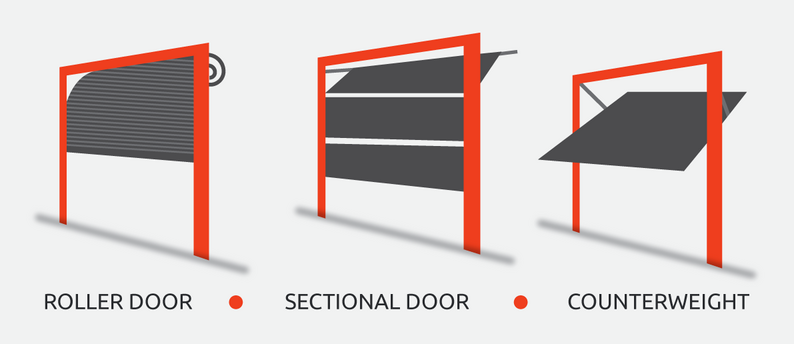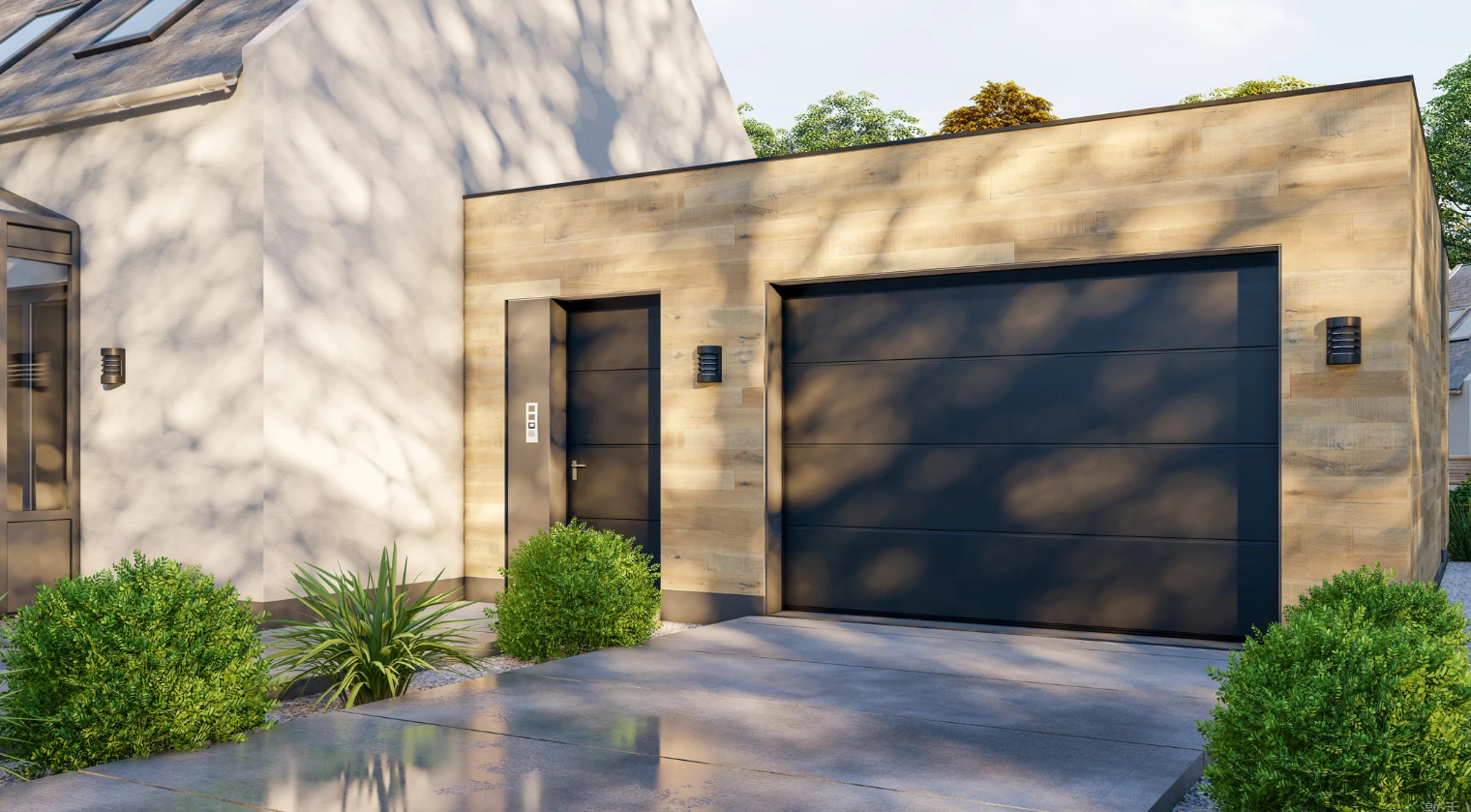The three types of garage doors are roller, sectional, and swing-out (or side-hinged) garage doors.
Roller Garage Doors
Definition and Mechanics
Roller garage doors are designed for efficiency and space-saving. They are made of horizontal slats or a single panel that rolls up into a coil at the top of the garage entrance. Usually constructed of steel or aluminum, these doors operate on a track system with the help of springs and motors.

Advantages and Disadvantages
Advantages
- Space-Saving: Roller doors roll up into a coil, saving ceiling space.
- Durability: Often made of strong materials like steel or aluminum.
- Automatic and Manual Options: Both automated and manual roller doors are available.
- Security: High-security locking mechanisms can be installed.
Disadvantages
- Cost: Often more expensive than other door types.
- Noise: Motorized versions can be noisy.
- Maintenance: Moving parts like springs and motors may require frequent upkeep.
Ideal Use Cases
Roller garage doors are ideal for smaller garages where ceiling space needs to be maximized. They’re also a good fit for garages with short driveways because they roll up vertically, without swinging outwards. Businesses with large storage units also benefit from the space efficiency of roller doors.
Maintenance Tips
- Regular Cleaning: Dust and debris can jam the rolling mechanism. A regular wipe-down keeps it clean.
- Lubrication: Use silicone spray to lubricate the tracks every 3-6 months.
- Visual Inspection: Look for any signs of wear and tear in the slats and the coil.
- Professional Checks: Annually, have a professional assess the health of the motor and springs.
Sectional Garage Doors
Definition and Mechanics
Sectional garage doors are composed of panel sections connected with hinges. As the door opens or closes, wheels at the edge of each panel roll inside a vertical track on each side of the door opening. The hinges between each panel section bend over a curved portion of the track. This feature allows the door to sit parallel to the ceiling when completely open or in line with the walls when fully closed. A pair of high-tension springs above the opening assist in lifting the door, controlled by cables and pulleys.
Advantages and Disadvantages
Advantages
- No Swing Out: The door does not swing outwards but moves upwards, making it suitable for shorter driveways.
- Versatility: Comes in a variety of materials and finishes, including wood, steel, and even glass sections.
- Weatherproof: Due to its tight seal, it’s excellent for keeping out the weather.
- Safety: Some models come with safety detectors that prevent pinching or shutting if something is detected under them.
Disadvantages
- Ceiling Space: Takes up more ceiling space than roller doors.
- Cost: Can be more expensive depending on material and design.
- Weight: Often heavier than other types, requiring stronger lifting mechanisms.
Ideal Use Cases
Sectional garage doors are perfect for homeowners who want a stylish, versatile look without sacrificing function. Their ability to fit in tight spaces, combined with their wide range of design options, makes them a favorite for both new and renovated homes. Businesses that prioritize aesthetics along with functionality can also benefit from the sleek design of sectional doors.
Maintenance Tips
- Panel Check: Inspect each panel for signs of damage or wear.
- Lubricate Moving Parts: Use a silicone-based lubricant on the tracks, rollers, and hinges.
- Check Springs: High-tension springs can wear out and be dangerous. Inspect them regularly and call a professional for replacement.
- Weather Sealing: Make sure the weather stripping at the base is intact and replace if necessary.
Swing-Out (or Side-Hinged) Garage Doors
Definition and Mechanics
Swing-out garage doors, also known as side-hinged garage doors, consist of two doors that open outward. These doors are hung on side-mounted hinges and often resemble traditional barn doors. Swing-out doors can be manual or fitted with an automated opener. Unlike roller or sectional doors, they do not roll up or fold back; instead, they swing out from the center, just like a typical set of double doors in a building.
Advantages and Disadvantages
Advantages
- Easy Access: The design allows for quick and straightforward entry and exit without having to open the door fully.
- Low Maintenance: Fewer moving parts mean less maintenance is required.
- Aesthetically Pleasing: Often used to achieve a more traditional or rustic look.
- No Ceiling Space Needed: Does not interfere with ceiling space, allowing for additional storage or installations.

Disadvantages
- Requires Space: The doors swing outwards, requiring more driveway space for opening.
- Less Weatherproof: The design is not as sealed as sectional or roller doors, making it less weather-resistant.
- Security Concerns: Can be less secure unless fitted with additional security mechanisms.
Ideal Use Cases
Swing-out garage doors are ideal for homeowners who have a long driveway or those who aim for a traditional or rustic aesthetic. They are also suitable for garages where ceiling space is used for storage or has installations like lighting fixtures or a car lift. Businesses looking for easier, quicker access to their storage areas may also find swing-out doors to be a convenient option.
Maintenance Tips
- Hinge Inspection: Regularly check the hinges for wear and tear.
- Lubrication: Periodically lubricate the hinges and any locks for smooth operation.
- Weather Stripping: Install or replace weather stripping to improve energy efficiency and comfort.
- Paint and Finish: Maintain the door’s aesthetic by keeping up with paint or finish, particularly if it’s made of a material like wood that is prone to weathering.
